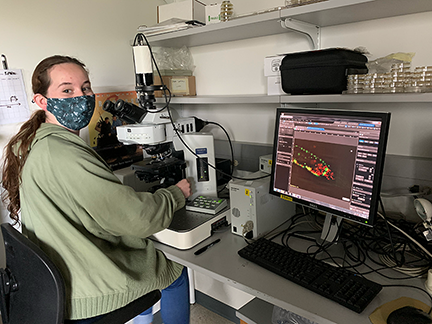Martin Hudson
Introduction
My lab uses nematode models to understand how the nervous system forms, and what happens when things go wrong in this process.
C. elegans nematodes offer many advantages for investigating nervous system development. The animals are transparent, allowing the use of fluorescent labels to monitor cell movement and morphology. They have an invariant cell lineage so individual cells can be easily identified and monitored for developmental defects. Finally, well-developed genetic techniques and a fully sequenced genome facilitate investigation of gene function in this organism.
We use time-lapse video microscopy and other techniques to understand how neuroblast migration contributes to C. elegans embryogenesis. We have also developed expertise in comparative transcriptomics to understand the role of transcription factors during nervous system development.

Undergraduates and master’s students carry out the bulk of research done in the lab. See our People page for where Hudson lab alumni have moved onto.









